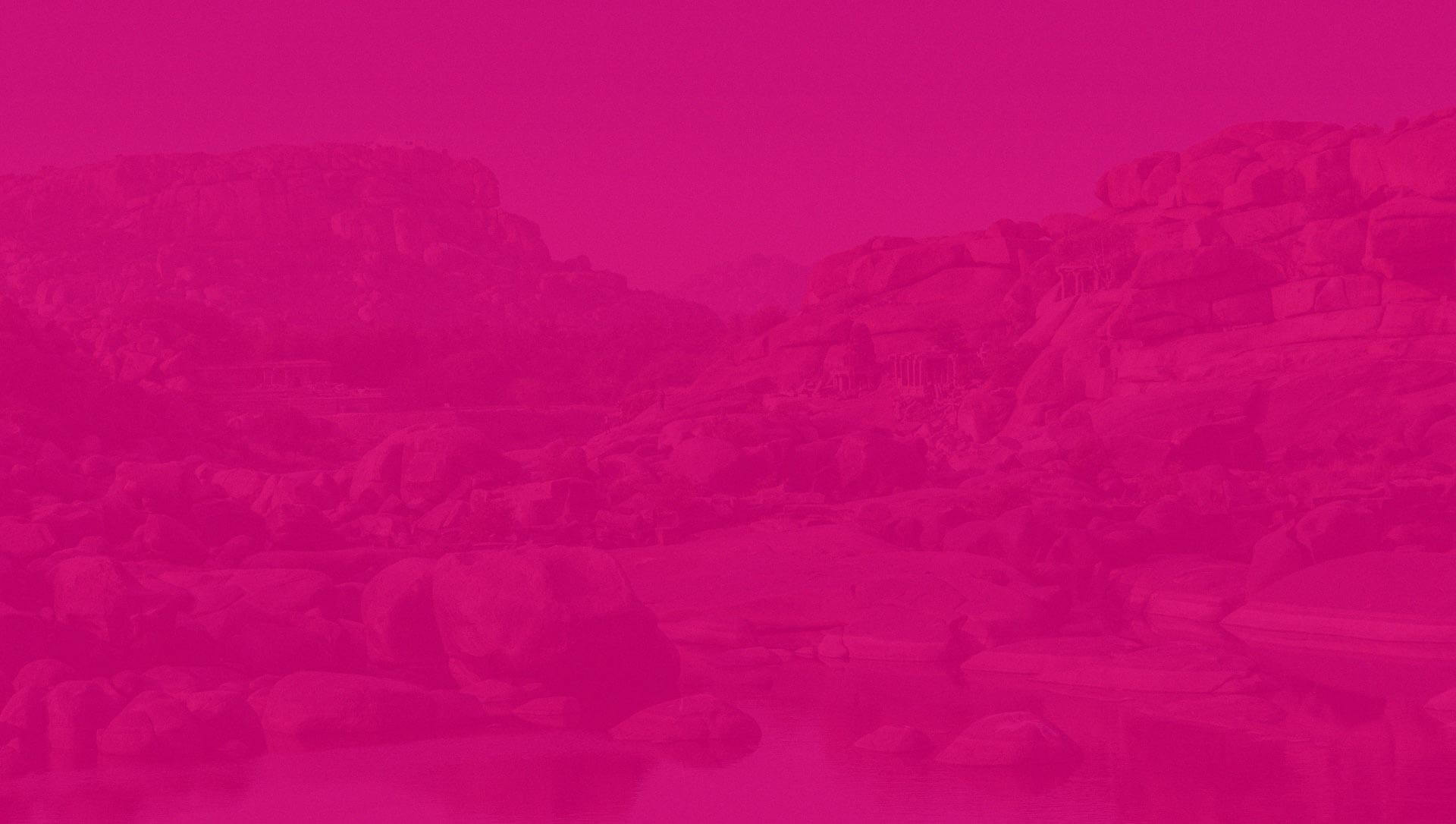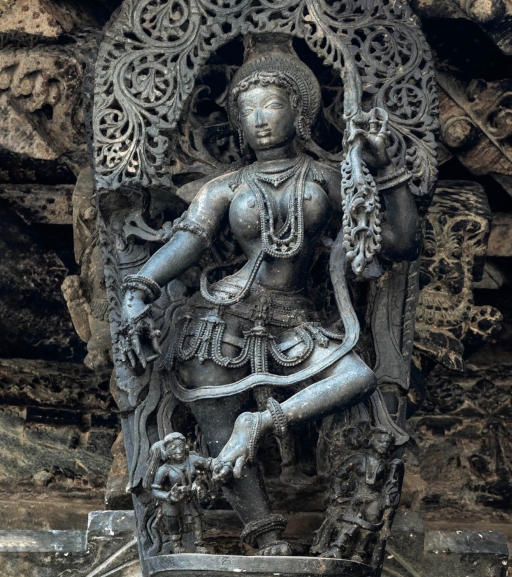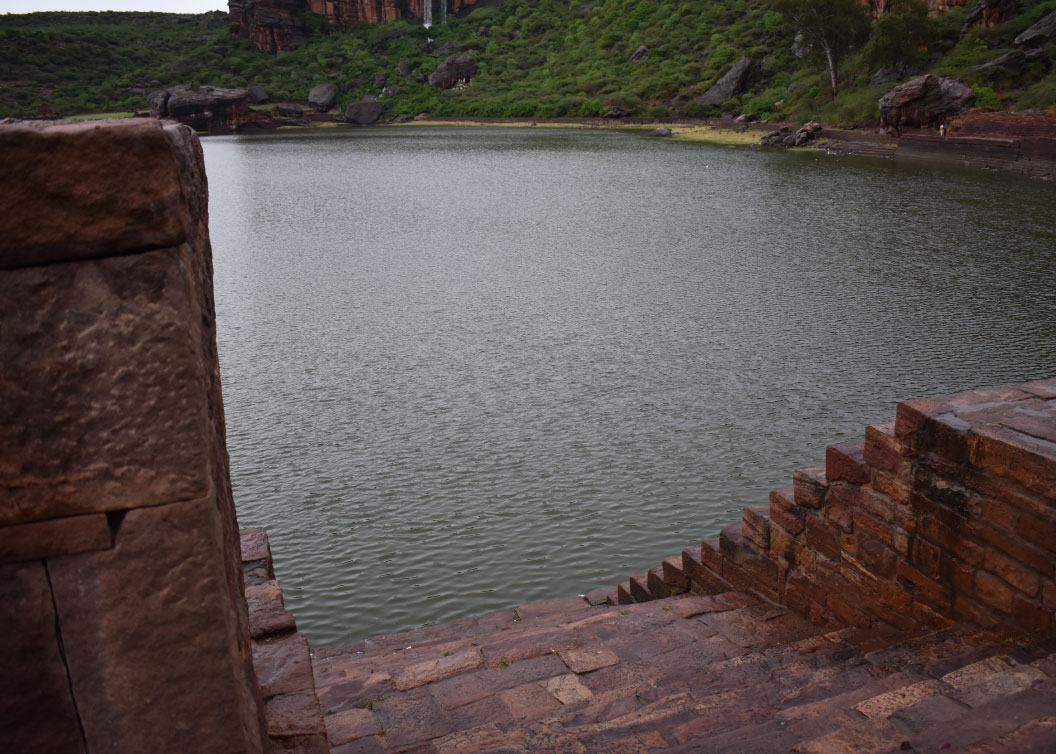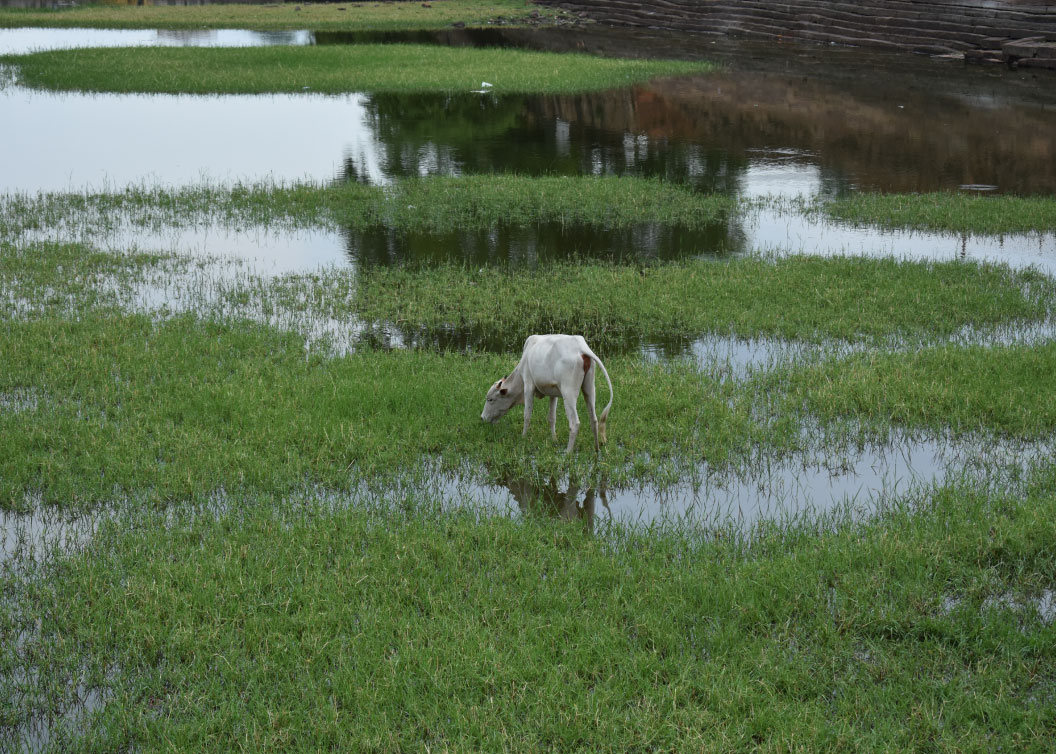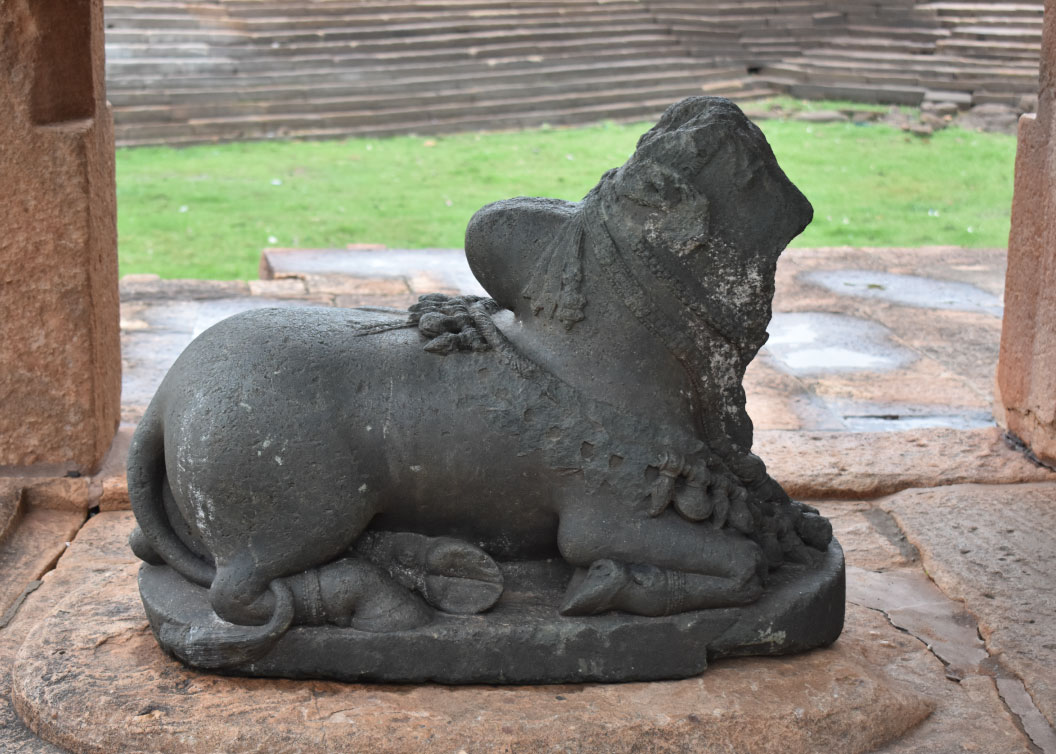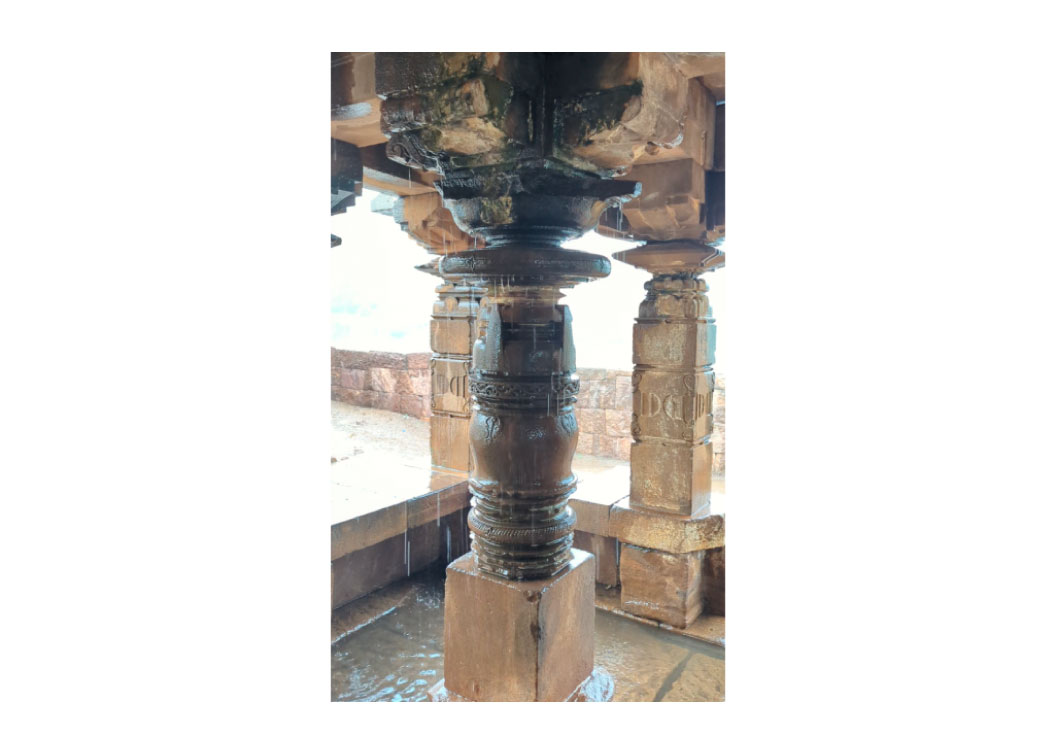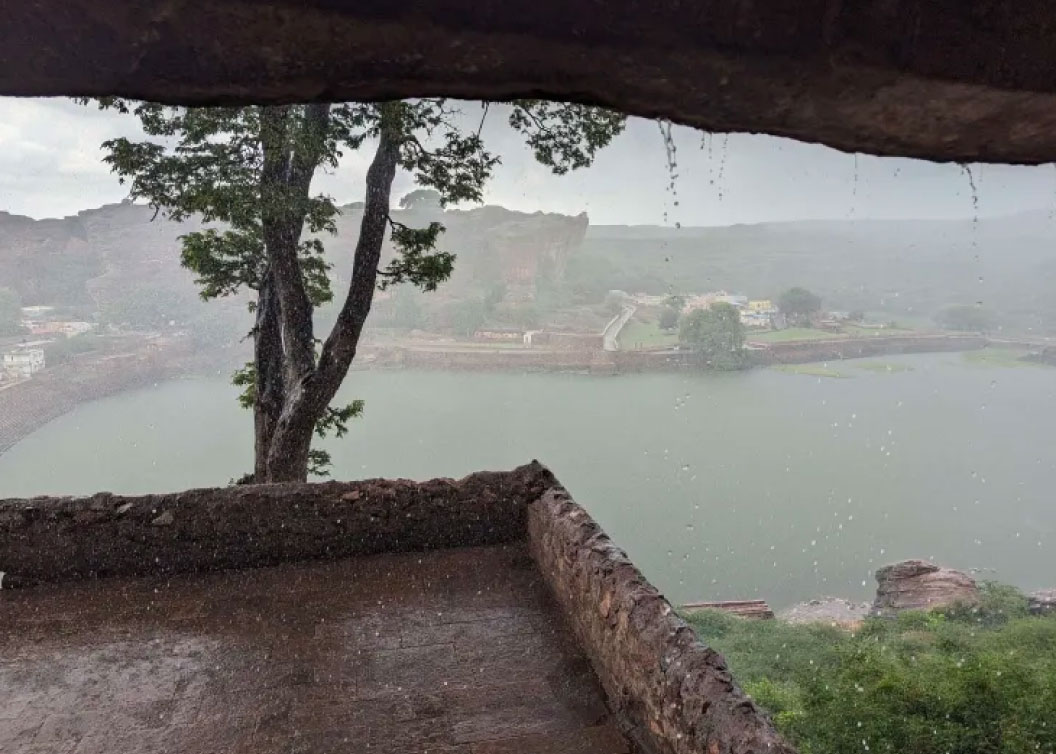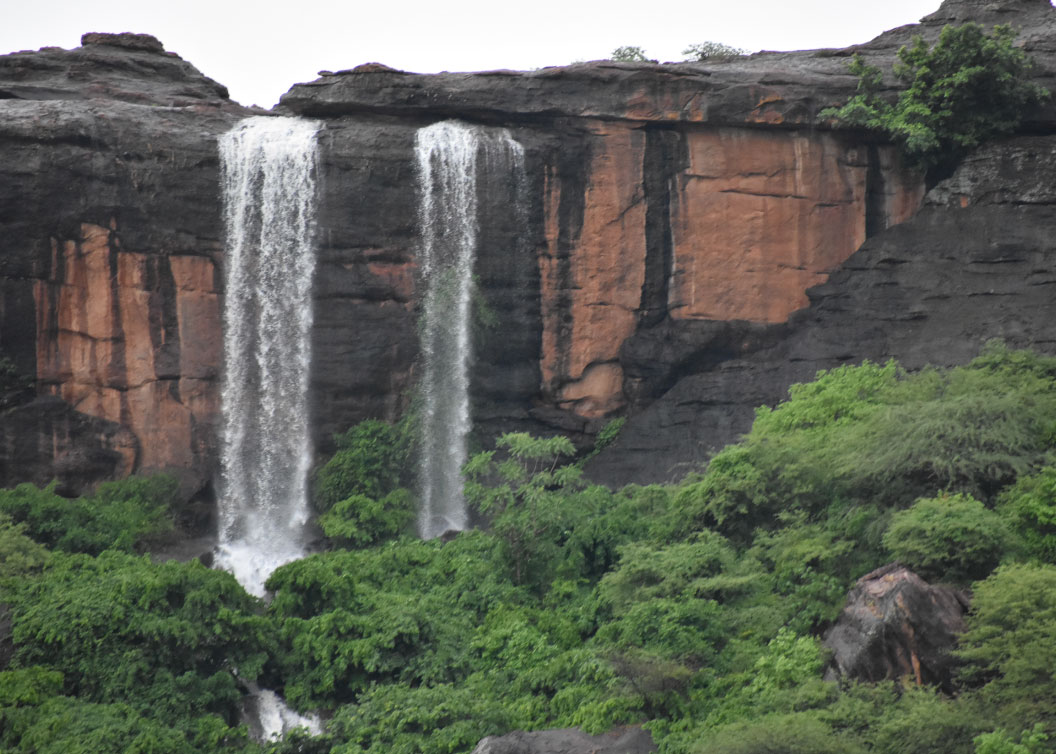Monsoon Landscapes: Water at Badami
John Weaver
Like many sites in South and Southeast Asia, water plays an essential role in tying together the built landscape of Badami. The enormous man-made tank in the center can be seen from nearly every key location, whether from the early cave temples of the South fort or from atop the soaring bluffs of the North near the proud Upper Shivalaya temple (Image 1).
On the West, the Yellamma Temple’s porch faces out towards steps which lead directly to the lake (Image 2). Opposite, the Bhutanatha group reaches out into the water itself, in which townsfolk bathe and wash their clothes as cows graze in delight (Image 3). Nearby, a sculpture of Nandi gazes towards his lord Shiva with the tank to his back (Image 4). These scenes make it clear that sites like Badami are not just gifts of the past, but living sites which breathe through their people and landscape.
Badami truly comes to life during the Monsoon: as heavy rains lash the earth the water of the tank seems to quiver with delight from thousands of droplets at once. One may savor this view from the shelter of the many temples which surround the tank. The Yellamma becomes amphibious during the rains as water sneaks through cracks in the porch and drips down columns to pool below (Image 5). At the cave temples, water slides down the eaves in sheets, dressing the world beyond in a wet veil (Image 6). From everywhere, one may see the magnificent waterfalls that cascade down the Deccan cliffs which embrace the town of Badami (Image 7).
